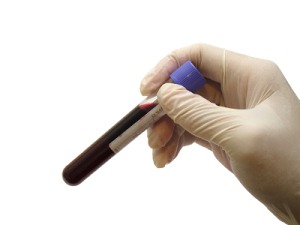Evaluation of OPAT practices and limits of use in rural areas in France

To evaluate outpatient parenteral antibiotic therapy (OPAT) practices in a French rural area” Triffault-Fillit et al (2017). Abstract: OBJECTIVES: To evaluate outpatient parenteral antibiotic therapy (OPAT) practices in a French rural area. MATERIAL AND METHODS: Descriptive study assessing knowledge, practices, and limitations of OPAT use among hospital practitioners (HP), family physicians (FP), and private nurses […]
Evidence-based guidelines to eliminate repetitive laboratory testing

This review presents an evidence-based implementation blueprint to guide teams aimed at improving appropriate routine laboratory testing among hospitalized patients” Eaton et al (2017). Abstract: Routine daily laboratory testing of hospitalized patients reflects a wasteful clinical practice that threatens the value of health care. Choosing Wisely initiatives from numerous professional societies have identified repetitive laboratory […]
Suggestions for phlebotomy standards improvement in Africa
A review of the available research has highlighted the dearth of information on the phlebotomy practice in Africa” Mbah (2017). Abstract: Phlebotomy, the act of drawing blood through venepuncture, is one of the most common medical procedures in healthcare, as well as being a basis for diagnosis and treatment. A review of the available research […]
Impact of virtual reality for acute procedural pain management

To conduct a randomized control trial to evaluate the feasibility and efficacy of virtual reality (VR) compared with standard of care (SOC) for reducing pain, anxiety, and improving satisfaction associated with blood draw in children ages 10-21 years” Gold and Mahrer (2017). Abstract: OBJECTIVE: To conduct a randomized control trial to evaluate the feasibility and […]
Risk factors for adverse drug events in outpatient parenteral antimicrobial therapy

To better monitor patients on outpatient parenteral antimicrobial therapy (OPAT), we need an improved understanding of risk factors for and timing of OPAT-associated adverse drug events (ADEs)” Keller et al (2017). Abstract: BACKGROUND: To better monitor patients on outpatient parenteral antimicrobial therapy (OPAT), we need an improved understanding of risk factors for and timing of […]
Outpatient parenteral antimicrobial therapy treating infective endocarditis

We analyzed a cohort of patients attended in an outpatient parenteral antimicrobial therapy program that has been working since 2012 in 2 tertiary hospitals” Gil-Navarro et al (2017). Abstract: WHAT IS KNOWN AND OBJECTIVE: Enterococcus faecalis is the third most common causal agent of infective endocarditis. Currently, the treatment recommended is a combination of ampicillin […]
Outcome of drone transportation of blood samples over long distances

We addressed the stability of biological samples in prolonged drone flights by obtaining paired chemistry and hematology samples from 21 adult volunteers in a single phlebotomy event-84 samples total” Amukele et al (2017). Abstract: OBJECTIVES: We addressed the stability of biological samples in prolonged drone flights by obtaining paired chemistry and hematology samples from 21 […]
Metastatic spread from squamous cell carcinoma over implantable port

Here, we report the first case of a patient with hypopharyngeal tumor who developed chest wall metastasis over the totally implantable venous access port inserted in the internal jugular vein” Mangla et al (2017). Abstract: BACKGROUND: The totally implantable venous access port plays a crucial role in delivering chemotherapy in the outpatient setting. Here, we […]
Challenges of continuous subcutaneous insulin infusion therapy
To use systematic methods to explore the psychosocial facilitators and challenges of insulin pump therapy among people with type 1 diabetes” Payk et al (2017). Abstract: AIM: To use systematic methods to explore the psychosocial facilitators and challenges of insulin pump therapy among people with type 1 diabetes. BACKGROUND: Insulin pump therapy is now widely […]
Successful outpatient parenteral antibiotic therapy delivery via telemedicine

High rates of favourable clinical outcomes and likely cost benefits suggest that telemedicine-supported OPAT is an efficacious and safe substitute for inpatient care in our setting” Tan et al (2017). Abstract: Objectives: Most outpatient parenteral antimicrobial therapy (OPAT) services use a hospital-based model of care in which patients remain in proximity to large hospitals facilitating […]
Article describes fluid and electrolyte balance in children

Safe intravenous fluid prescription in children requires an understanding of certain basic principles to avoid adverse events” Tetris and Crean (2017). Abstract: Safe intravenous fluid prescription in children requires an understanding of certain basic principles to avoid adverse events. Careful consideration needs to be given to both the appropriate rate and composition of the fluids […]
Case study describes PICC line CRBSI due to Tsukamurella pulmonis

PICCs can be associated with T. pulmonis bacteremia, and fourth generation cephalosporins may be effective treatment” Suzuki et al (2017). Abstract; BACKGROUND: Tsukamurella pulmonis is an aerobic gram-positive and rod-shaped organism that causes central catheter-related bloodstream infections in immunocompromised hosts. However, peripherally inserted central catheter (PICC)-related bloodstream infections due to this organism have not been […]
Safety of contrast injection via venous catheters for contrast-enhanced CT

To examine the safety and efficacy of contrast injection through a central venous catheter (CVC) for contrast-enhanced computed tomography (CECT)” Buijs et al (2017). Abstract: OBJECTIVE: To examine the safety and efficacy of contrast injection through a central venous catheter (CVC) for contrast-enhanced computed tomography (CECT). METHODS: A systematic literature search was performed using PubMed. […]
Reducing IV catheter-related thrombosis using a vessel ratio risk reduction tool
In vascular access practices, the internal vessel size is considered important, and a catheter to vessel ratio (CVR) is recommended to assist clinicians in selecting the most appropriate-sized device for the vessel” Spencer and Mahoney (2017). Abstract: In vascular access practices, the internal vessel size is considered important, and a catheter to vessel ratio (CVR) […]
Nurses are reliable at determining ideal PICC tip location

Our results demonstrate that the measurement of distance between catheter tip and tracheal carina performed by a nurse provide a convenient and reliable way to determine position of PICC tip” Zhang et al (2017). Abstract: INTRODUCTION: Accurate identification of position of a central venous catheter tip is important to reduce catheter-related complications. Nevertheless, inter-observer bias […]
Venous pain induced by peripheral intravenous administration of oxaliplatin
The aim of this study was to determine the efficacy of comprehensive intervention care for venous pain in colorectal cancer patients receiving oxaliplatin” Kawazoe et al (2017). Abstract: Background: Venous pain induced by peripheral intravenous administration of oxaliplatin remains clinically unresolved. Objective: The aim of this study was to determine the efficacy of comprehensive intervention […]
An update on clinical practice associated with home parenteral nutrition

This updated tutorial reviews many of the concepts and challenges that must be considered for successful care that helps to focus on the patients and their quality of life” Kiby et al (2017). Abstract: The trend in modern medicine is to transition care from the hospital to home or other nonacute settings as soon as […]
Home parenteral nutrition and vascular access related complications

Good catheter care requires an experienced multidisciplinary team using appropriate vascular devices, trained to identify and aggressively treat catheter-related bloodstream infections, catheter occlusions, and catheter-related thrombosis” Dibb and Lal (2017). Abstract: Patients with chronic intestinal failure are dependent on parenteral nutrition (PN) to maintain health and preserve life. Maintaining safe vascular access is vital to […]
Implementation of CLABSI prevention bundles using peer tutoring

Implementation of CLABSI prevention bundles using peer tutoring in a resource-limited setting was useful and effectively reduced CLABSIs” Park et al (2017). Abstract: Background: Central line-associated bloodstream infections (CLABSIs) can be prevented through well-coordinated, multifaceted programs. However, implementation of CLABSI prevention programs requires individualized strategies for different institutional situations, and the best strategy in resource-limited […]
Central venous catheter-related thromboembolism in breast cancer patients
Previous epidemiologic studies investigating central venous catheter (CVC)-related venous thromboembolism (CRT) were conducted in heterogenous cancer populations and data in breast cancer (BC) remain limited” Debourdeau et al (2017). Abstract: Previous epidemiologic studies investigating central venous catheter (CVC)-related venous thromboembolism (CRT) were conducted in heterogenous cancer populations and data in breast cancer (BC) remain limited. […]
Fully-automated peripherally inserted central catheter tip detection
This system could help speed confirmation of PICC position and further be generalized to include other types of vascular access and therapeutic support devices” Lee et al (2017). Abstract: A peripherally inserted central catheter (PICC) is a thin catheter that is inserted via arm veins and threaded near the heart, providing intravenous access. The final […]
Systematic review and meta analysis of HAI risk factors

This article aimed to systematically review the literature and meta-analyze studies investigating risk factors (RFs) independently associated with HAIs in hospitalized adults” Rodríguez-Acelas et al (2017). Abstract: Background: Health care–associated infections (HAIs) are a public health problem that increase health care costs. This article aimed to systematically review the literature and meta-analyze studies investigating risk […]
Assessment of hemodynamic response to fluid resuscitation

Measurement of the IVC-CI can provide early detection of hemodynamic response to fluid therapy in patients with intra-abdominal infection with spontaneous breathing compared to UOP” Abahuje et al (2017). Abstract: BACKGROUND: Patients with intra-abdominal infections need to achieve adequate hemodynamic status before being taken to the operating room. Multiple parameters (urinary output [UOP], vital signs, […]
What are the risk factors for PICC perforation in neonates?

PICC-associated pericardial effusions and pleural effusions are rare but inherent risks and can occur at any time after insertion” Sertic et al (2017). Abstract: BACKGROUND: Peripherally inserted central catheters (PICCs) are increasingly used in neonates but perforations can result in devastating complications such as pericardial and pleural effusions. Identifying risk factors may guide surveillance and […]
Empower patients and engage leadership to reduce CLABSI

Findings of excellence and improvement opportunities were communicated to unit staff and managers. LLCRs contributed to compliance with CLABSI prevention interventions” Owings et al (2017). Abstract; To prevent central line–associated bloodstream infections (CLABSIs), leadership line care rounds (LLCRs) used the engage, educate, execute, and evaluate improvement model to audit compliance, identify barriers and opportunities, empower […]
Total parenteral nutrition in patients following pancreaticoduodenectomy

Herein, we evaluate the indications for and outcomes associated with TPN use in a high-volume pancreatic surgery center” Worsh et al (2017). Abstract: BACKGROUND: Total parenteral nutrition (TPN) has historically been used conservatively in the management of patients after pancreaticoduodenectomy (PD). Herein, we evaluate the indications for and outcomes associated with TPN use in a […]
Comparison of subcutaneous and intravenous teicoplanin

This is the first study examining the pharmacokinetic/pharmacodynamic implications of using the sc route for teicoplanin” Cazaubon et al (2017). Abstract: Objectives: To investigate the population pharmacokinetics of teicoplanin in patients treated by the subcutaneous (sc) and/or intravenous (iv) route. Patients and methods: Non-linear mixed-effects modelling described teicoplanin concentrations from 98 patients with infection caused […]
CLABSI study in five cities from the Kingdom of Saudi Arabia

To analyse the impact of the International Nosocomial Infection Control Consortium (INICC) Multidimensional Approach (IMA) and INICC Surveillance Online System (ISOS) on central line-associated bloodstream infection (CLABSI) rates in five intensive care units (ICUs) from October 2013 to September 2015” Al-Abdely et al (2017). Abstract: OBJECTIVE: To analyse the impact of the International Nosocomial Infection […]
Securement and dressing effectiveness for peripherally inserted central catheters

Poor securement potentiates all complication types. This randomised controlled trial (RCT) aimed to examine the feasibility of a large RCT of four dressing and securement methods to prevent PICC failure” Chan et al (2017). Abstract: BACKGROUND: Peripherally inserted central catheters (PICCs) are commonly used for delivering intravenous therapy. PICC failure is unacceptably high (up to […]
Risk of infective endocarditis in hemodialysis patients

Endocarditis is a serious complication in patients treated with RRT. The study aimed to examine incidence and risk factors of endocarditis in patients with ESRD” Chaudry et al (2017). Abstract: BACKGROUND AND OBJECTIVES: Endocarditis is a serious complication in patients treated with RRT. The study aimed to examine incidence and risk factors of endocarditis in […]

